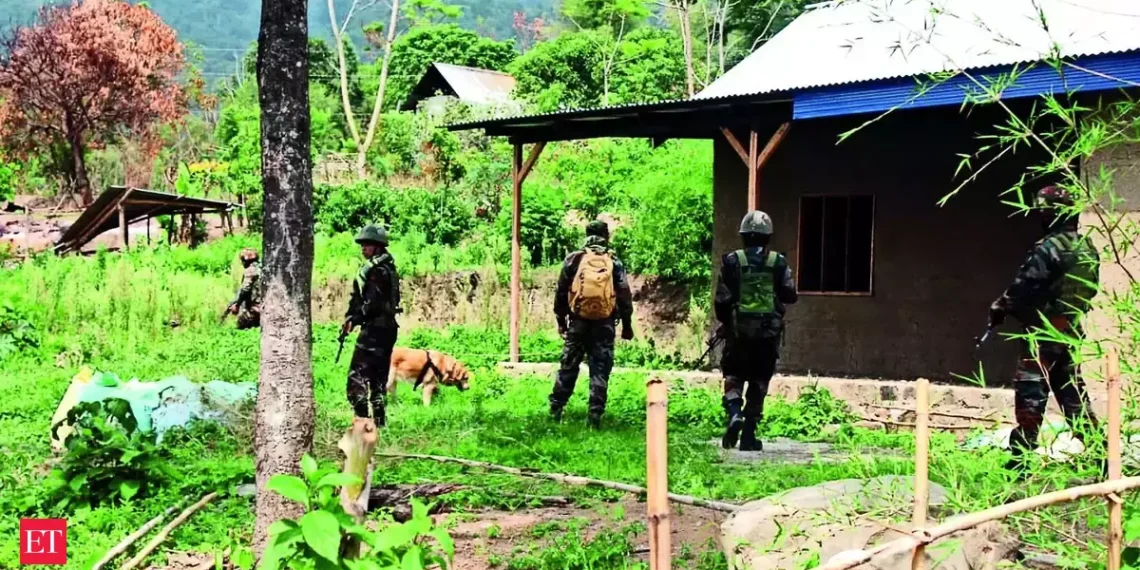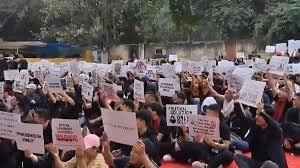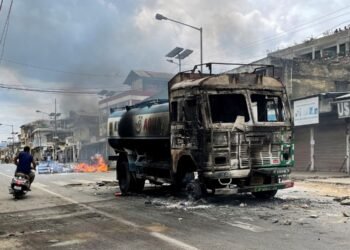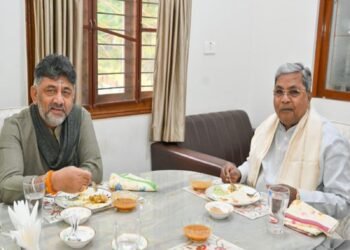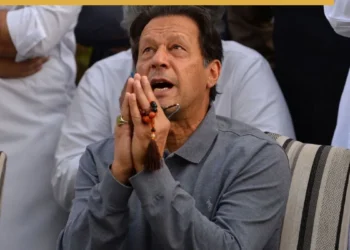Manipur’s 2024: a year of relentless suffering and shattered dreams. With a government that looked away and communities torn apart, this story delves into the darkest corners of human despair and resilience. Goodbye 2024 is a heartrending testament to a year that Manipur cannot forget.”
BY Navin Upadhyay
As the final days of 2024 unfold, Manipur finds itself grappling with a year that will forever be remembered as one of its darkest chapters. From unrelenting violence to human tragedies that defy comprehension, the state endured a relentless storm of sorrow. Despite prayers for peace and efforts at reconciliation, hope remained elusive in this once-tranquil region.
Amid the unrelenting violence, faint glimmers of hope emerged through efforts aimed at restoring peace. In October, the Union Home Ministry convened a pivotal meeting in New Delhi, bringing together MLAs from the Meitei, Kuki, and Naga communities. This gathering, held on October 15, marked the first such initiative since the ethnic conflict began in May 2023. The goal was clear: to foster dialogue among the warring factions and appeal to the people of Manipur to abandon the path of violence. While the details of the discussions remained shrouded in secrecy, the very act of gathering these voices underscored the urgent need for reconciliation.
Beyond governmental efforts, humanitarian interventions also played a vital role. Organizations like the Committee on Tribal Unity (CoTU) stepped in during critical moments to mediate and negotiate. Their intervention on October 3 facilitated the exchange of two abducted youths for Kuki prisoners, a gesture that, though fraught with complexity, demonstrated the enduring potential for dialogue even in the darkest of times.
At the grassroots level, local communities and religious groups made their own heartfelt attempts to bridge divides. Prayer gatherings sprouted across the state, where participants implored their neighbors to embrace unity and reject violence. Though small in scale, these gatherings offered solace and a semblance of hope to those yearning for healing and reconciliation.
Each of these initiatives, while limited in scope and impact, served as a reminder that even in the face of relentless turmoil, the human spirit’s yearning for peace remains unbroken.
Acting on specific intelligence, troops of #IndianArmy and #AssamRifles formations under #SpearCorps carried out joint search operations in the hill and valley regions in the districts of Churachandpur, Tengnoupal, Yaingangpokpi and Imphal East in #Manipur, in close coordination… pic.twitter.com/xPxnTcUSXF
— SpearCorps.IndianArmy (@Spearcorps) December 30, 2024
However, these peace efforts, while significant, barely scratched the surface of the deeply entrenched divide between the Meitei and Kuki-Zo communities. A cursory glance at social media platforms reveals the stark chasm, with sentiments echoing the bitterness and mistrust that fuel the conflict. The highly partisan approach of the Biren Singh Government has only served to deepen these divisions, polarizing the state further.
There is a glimmer of hope, however, in the recent appointment of Ajay Kumar Bhalla as Governor. Many believe that his leadership could help restore some measure of confidence in the administration, paving the way for a more meaningful and effective peace initiative.
Major Incidents of Violence in 2024
| Date | Incident | Impact |
| May 2024 | Completion of one year since the ethnic conflict began. | Thousands displaced; a deepening humanitarian crisis. |
| Sept 1, 2024 | Kuki militants used weaponized drones, bombing Koutruk and Kadangband. | 1 killed, 10 injured; fear of modern warfare escalated. |
| Sept 2, 2024 | Drone attack in Senjam Chirang. | 3 injured; civilian insecurity increased. |
| Sept 6, 2024 | Rockets fired into Moirang by militants. | 1 killed; further violence fueled unrest. |
| Nov 7, 2024 | A 31-year-old Hmar woman was murdered in Jiribam. | A brutal act, sparking widespread outrage. |
| Nov 11, 2024 | Kuki militants abducted six civilians, including a toddler, during chaos in Jiribam. | All six were killed; bodies found days later in rivers. |
| Nov 25, 2024 | Disappearance of Laishram Kamalbabu from Leimakhong Army Camp. | Outrage over Army’s failure to explain the incident. |
| Sept 27–Oct 3, 2024 | Two youths abducted during an Army recruitment drive and later exchanged for Kuki prisoners. | Highlighted the fragility of governance in conflict zones. |
| Festive Season | Five-day gunfight at Yaingangpokpi despite calls for peace. | Continued violence overshadowed prayers for unity. |
Neglected by the Nation:
Despite the harrowing violence and persistent unrest that engulfed Manipur throughout the year, the state has suffered from a palpable neglect by the central government. Prime Minister Narendra Modi, despite the gravity of the situation, has not set foot in Manipur even once during this prolonged crisis. His absence is a glaring omission that has left many questioning the government’s commitment to addressing the state’s deepening turmoil.
Senior ministers from the central government have also rarely visited, treating the situation with an alarming detachment. Their sporadic engagements and lack of consistent on-ground presence have sent a disheartening message to the people of Manipur, who are desperate for empathy and decisive action. The sporadic visits by a few officials have been characterized more by perfunctory statements than by substantive measures to alleviate the pain and suffering of the state’s populace.
This lack of proactive involvement by the central leadership stands in stark contrast to the scale of the crisis. With weaponized drones, hostage killings, and mass displacement, the conflict has demanded urgent and sustained intervention. Yet, the Centre’s muted response has further deepened the disillusionment among the people of Manipur, making them feel isolated and abandoned in their darkest hour.
The absence of visible solidarity and tangible actions from New Delhi has not only exacerbated the trust deficit but also hindered meaningful peace-building efforts. Many are left asking: if such violence and suffering cannot command the attention of the nation’s leaders, what hope is there for a fractured Manipur to find justice and healing?
Shattered Lives and Unanswered Questions
Despite these initiatives, the year was marked by weaponized drones, brutal abductions, and mysterious disappearances. In September, the use of drones by Kuki militants symbolized the escalation of violence. November brought even more anguish, with the abduction and murder of six civilians and the mysterious disappearance of Laishram Kamalbabu.
Countless families were displaced, thousands of lives disrupted, and trust in governance eroded. Internally displaced people languish in makeshift camps, yearning for a return to their villages. The scars of violence—physical and emotional—run deep, leaving many to wonder:
- Will peace ever return to Manipur?
- Will justice prevail for the innocent lives lost?
- Can the state rebuild and heal from this prolonged agony?
A Prayer for Peace
As the year ends, the people of Manipur remain caught between despair and resilience. The festive season, usually a time of joy, was overshadowed by gunfights and grief. Ministers and community leaders called for peace, but the ground reality offered little relief.
Manipur bids farewell to 2024 with a heavy heart, hoping against hope that the coming year might bring an end to the bloodshed and the beginning of healing. For now, the state’s collective prayer is simple yet profound: may peace return, and may justice prevail.


